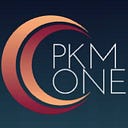In this course, we are going to learn how to use the zettelkasten note-taking system to become prolific content creators.
Read further if you belong to the following cohort
1. Writers and content creators who struggle with productivity.
2. Learners — Do you want to master and learn a topic quickly.
3. Personal Knowledge Management Entusiast — Are your current notes taking systems not giving results?
What is Zettelkasten?
Zettelkasten” is a “slip box” and “note-taking system.” Zettel means “slip” and Kasten means “box” in german. The name “Zettelkasten” means “card file” in German; it refers to the physical folders or boxes used for storing cards (usually 3x5 inch or 4x6 inch). Each card contains one piece of information: an idea, a quote from another source material etc.). Cards can be sorted into different categories according to topic or chronology.
Zettelkasten was popularised by Niklas Luhmann
The Zettelkasten Workflow
At the most basic the Zettelkasten System has three components
1. Fleeting Notes
2. Literature Notes
3. Permanent Notes.
Let us learn what they are.
Fleeting Notes
Fleeting notes are the thoughts that come through our heads as we go on our daily lives, whether it’s shower thoughts, thoughts that you have when you’re taking a long walk. When you’re talking to friends and all of a sudden you have an epiphany.
These are thoughts that disappear very quickly, so we must capture them first.
Literature Notes
The second type of notes is literature notes.
This is what we write down when we are consuming content, whether it’s reading a book or an article, listening to a podcast, watching a YouTube video, watching a movie, listening to songs.
It doesn’t matter what it is. When you’re consuming content, you want to write down literature notes.
Some Rules for Literature Notes
- One atomic idea for each note. (So it has to be brief no more than three to five sentences.)
2. It also has to be redescribed in your own words so that you internalize what is being said.
3. You also want to be able to note down the references so you know exactly where they came from, and you can always go back to reference them.
So now we have fleeting notes from everyday life. We have literature notes from when we consume content and when we are learning.
Permanent Notes
Then the third type of note is permanent notes.
We create permanent notes by reviewing what we have written in fleeting notes and in our literature notes. So the input is the literature notes and the fleeting thoughts that we have had, and the output is the permanent note.
Sönke Ahrens who wrote the best selling book “How to take smart notes” says,
The productivity of a knowledge worker should be tracked by how many permanent notes you produce a day.
The rules for writing a permanent note are the following
- One atomic idea per note. The rationale behind these rules is simple. First, you want one idea per note because these are building blocks.
2. Express the idea, clearly assuming the reader does not have context. You want to assume that the reader doesn’t have any context, and this is because you are trying to make the system future proof.
3. Connect them with the other notes in your system. Each note is a building block where you can rearrange and connect with new ideas, old ideas, things that seemingly are not connected. So you want to be able to remove complexity and be able to rearrange these ideas.
This course has used the notes from this video, I highly recommend you watch it.
Bonus — How to Read a Book using Zettelkasten by David Kadavy
David Kadavy process for reading and summarizing a book with my improvisations.
This note is inspired by the article by David Kadavy.
David Kadavy process for reading and summarizing a book with my improvisations.
When David really wants to absorb and document his learnings from a book, here’s the process he follows:
1. Read the book: Highlight as you read (on kindle or a paper book), and occasionally take a quick note (which is hard to do on a Kindle).
2. Export the highlights to Markdown: Readwise makes this easy, though there are other ways if you search around.
3. Highlight the highlights: Highlight highlights. Tiago Forte calls highlighting highlights “progressive summarization.”
Condense the highlights: Look at the highlights you have bolded and re-write the interesting ones in your own words. Try to pull out any interesting quotes. You may also brainstorm your own thoughts about the implications of what you have learned. This is all a “Literature Note.”
Break the condensed highlights into notes: Make individual “Permanent Notes” in the slip box — one idea per note. Then add relevant tags, link the note to any existing related notes, and add thoughts.
